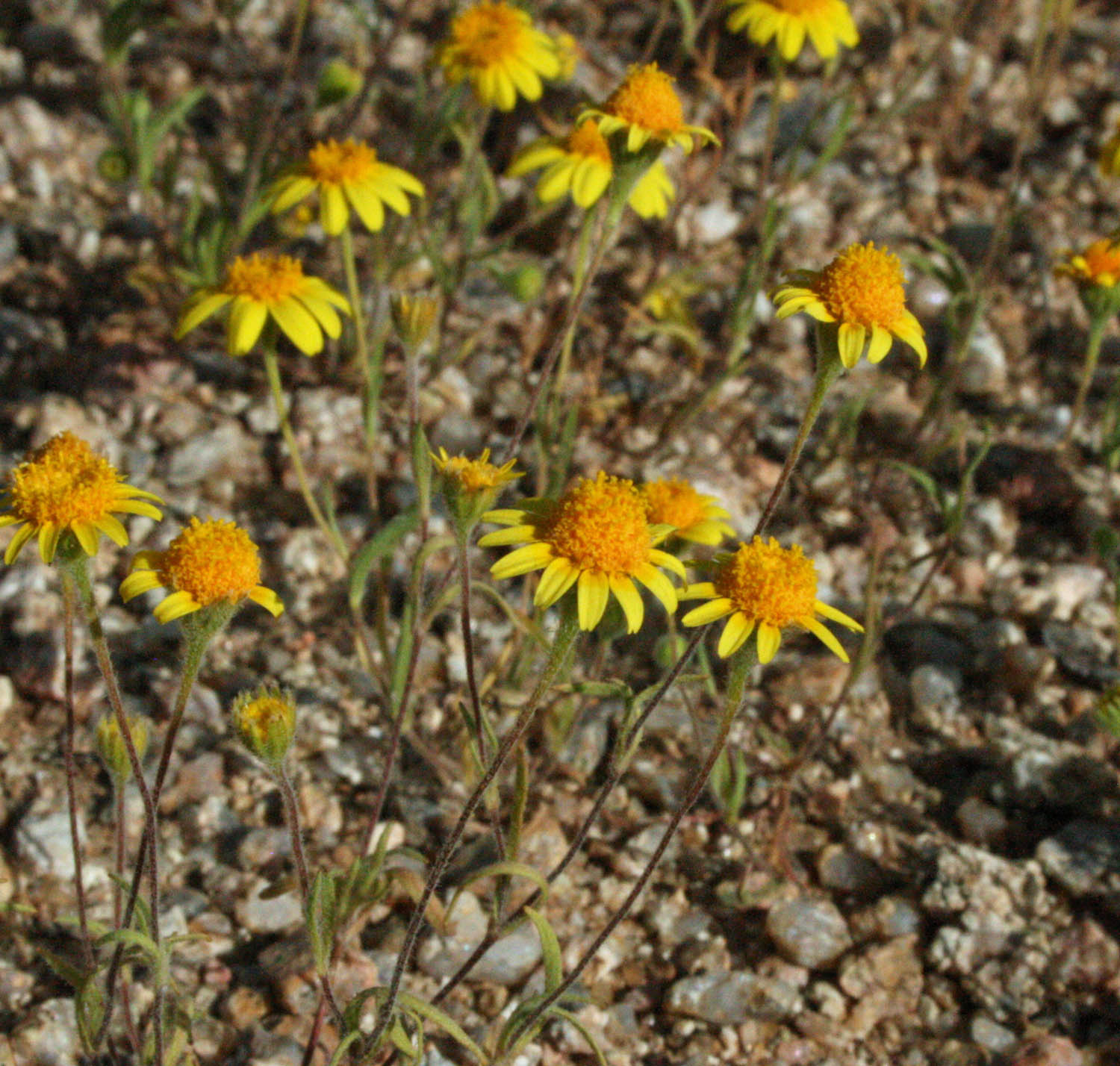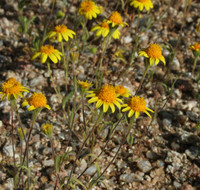Annuals (perennials), to 40(-60) cm (taprooted or roots fibrous, fleshy and clustered in Lasthenia californica subsp. bakeri). Stems usually erect, sometimes decumbent, prostrate, or sprawling, simple or branched (usually distally, often proximally in decumbent plants). Leaves mostly cauline; opposite; petiolate or sessile; blades usually linear, often 1(-2)-pinnately lobed, ultimate margins entire or toothed, faces glabrous or hairy. Heads usually radiate, sometimes ± disciform (in L. glaberrima and L. microglossa), borne singly or in ± corymbiform arrays. Involucres obconic to hemispheric, 3-5+ mm diam. Phyllaries usually persistent, sometimes falling with cypselae, 4-18 in 1(-2) series (usually ± erect in fruit, distinct or ± connate, narrowly oblong to broadly ovate, mostly herbaceous, bases flat or weakly cupped, faces not woolly, except sometimes in L. minor and L. platycarpha). Receptacles hemispheric to narrowly conic or subulate, smooth, papillate, or pitted, glabrous or hairy, epaleate. Ray florets 4-16, pistillate, fertile; corollas yellow to orangish (sometimes white in L. debilis, often somewhat darker proximally, laminae rarely lacking in L. glaberrima and L. microglossa). Disc florets 5-100+, bisexual, fertile; corollas yellow to orangish (sometimes white in L. debilis), tubes shorter than or about equaling funnelform or campanulate throats, lobes (4-)5, deltate. Cypselae (black to gray) usually cylindric to obovoid, glabrous or hairy, sometimes papillate (flattened, margins fringed with blunt, curved hairs in L. chrysantha); pappi 0, or of 1-12 erose, fimbriate, or laciniate, truncate or aristate scales (sometimes 2 kinds in combination on single cypselae). x = 8.
Lasthenias occur in a wide variety of habitats; some are particularly conspicuous members of vernal-pool floras. The characteristic rich, golden yellow color of Lasthenia gracilis can be seen to cover thousands of hectares of grasslands and open woodlands in early spring, giving the genus its common name. Relatively few taxa are widely distributed; most have relatively restricted distributions. Some are considered to be of conservation concern.
Lasthenia glaberrima, L. kunthii, L. maritima, and L. microglossa are self-pollinating; the rest are self-incompatible, obligate outcrossers. Lasthenia ornduffii and two subspecies of L. californica are perennial; the rest are spring annuals. It is not uncommon to find two Lasthenia species growing more or less sympatrically (in discrete populations).
Most lasthenias show a wide latitude of morphologic response to environmental conditions. Growth of individual plants of Lasthenia is robust in good conditions; in unfavorable conditions, single stems terminating in relatively small heads with relatively few florets are produced. Other morphologic characters such as the degree of leaf dissection, leaf margin, and pappus elements sometimes are plastic.
Circumscriptions of taxa here are based on R. Ornduff (1966b) with realignments proposed by R. Chan (2000). Sections are characterized by morphology, chromosome numbers, biochemistry, ecology, and molecular data.












